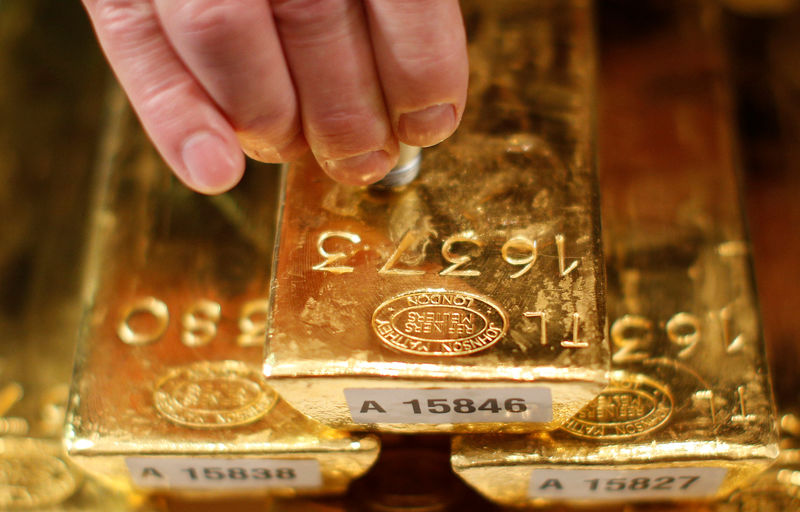Investing.com -- Gold prices edged lower on Thursday and were nursing steep losses for the week as signs of a resilient U.S. economy and job market pushed up fears of rising interest rates.
The yellow metal slid nearly $30 over the past two days, with December futures pulling further away from the key $2,000 an ounce level as data showed that private payrolls grew substantially more than expected in July.
The reading boosted the dollar, and ramped up concerns over a strong labor market, ahead of official nonfarm payrolls data due on Friday. Strength in the dollar bought most metal prices lower.
Spot gold was flat at $1,935.41 an ounce, while gold futures fell 0.2% to $1,970.75 an ounce by 20:51 ET (00:51 GMT).
Gold sees little love after U.S. rating cut, dollar strong
The yellow metal saw little safe haven demand, even as a cut to the U.S. sovereign rating by Fitch spurred risk aversion in other financial markets.
But analysts said that the move would have little actual impact on financial markets, and was driven more by concerns over stretched fiscal spending and political sparring over policy.
The dollar rose past the Fitch cut, taking support from much stronger-than-expected payrolls data released by ADP (NASDAQ:ADP). The reading followed data earlier this week that showed some signs of a U.S. manufacturing and construction recovery.
The data spurred bets that the Federal Reserve will have enough economic headroom to hike rates further and keep them there - a scenario that bodes poorly for gold and metal markets.
Rising interest rates push up the opportunity cost of holding bullion, and also see investors prefer the dollar as a safe haven over gold.
Markets are also awaiting a 25 basis point interest rate hike from the Bank of England later in the day.
Copper under pressure as China stimulus hopes wane
Among industrial metals, copper prices fell sharply this week, hit by a mix of dollar strength and waning optimism over more Chinese stimulus.
Copper futures were flat at $3.8468 a pound, after tumbling 4% in the last three sessions.
While Chinese officials vowed to roll out more policy support for the economy, they offered scant details on how said measures will be carried out. Economic data from the country also pointed to a continued decline in business activity.
